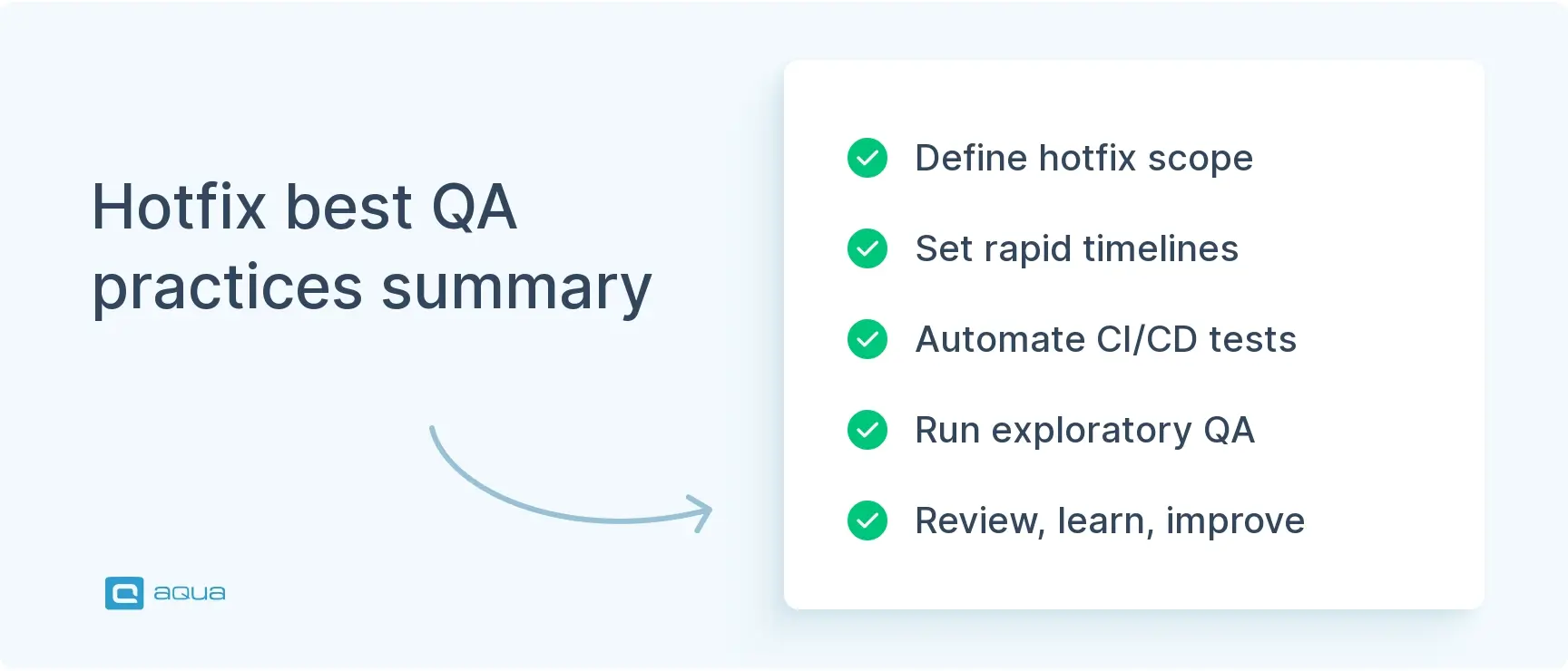“How to adopt & do efficient QA in a situation when hotfixes alter your test plan and Sprint?” — that’s an interesting question we found in a r/softwaretestingtalks community.
You can see how our CSO Paul Elsner is answering it on our Youtube channel or continue reading this article to learn the main points of his answer.
So, a hotfix is a term used for a critical fix deployed on production to patch the client business issue.
What does a typical hotfix test and release look like?
Hotfix test and release process are composed of the following steps:
-
The customer reports the issue.
-
The Dev & QA Team checks whether it’s a valid issue or not.
-
Product Owner creates a ticket in case of a valid issue.
-
The developer starts working on the reported issue and deploys its fix on the QA/Staging Environment.
-
QA team starts testing the fix and executes various necessary regression tests to check its impact on the SUT (Software Under Test).
-
DevOps deploys the Hotfix to production after getting the “Green Go” signal from the QA.
-
QA tests the fix on production
If you want to reduce the number of hot fixes, you need a good testing strategy. We have prepared a template that covers 20 years of our experience in QA of any scale. Download that now, and you won’t have to worry about hot fixes later.

Get a testing strategy template that enables us to release 2 times faster
So, how does the development and QA of hotfix fit in the running sprint?
One basic rule of scrum is not to take any new or additional tickets that can impact the sprint goal. Thus, all the nice-to-have features are parked for the next sprints and not considered in the ongoing Sprint.
Hotfixes trump sprint priorities, period. When critical business issues pop up, notify your PO and Scrum Master immediately so everyone’s on the same page. Teams that document these interruptions see about half the sprint disruption compared to those who simply “wing it.” Remember to adjust workloads transparently — your team will thank you later.
Operationalising hotfix best QA practices
Would you deploy any code without a QA process? Of course, No. Follow the same Development and QA practices on a smaller and faster scale for hotfixes.
-
Define the scope of the Hotfix.
-
Determine timelines for the code fix, testing, and deployment.
-
Keep your QA watertight during hotfixes by setting up a smart CI/CD pipeline. Tag your tests strategically – this lets you run only what’s relevant to the fix area instead of the whole suite, cutting validation time nearly in half. Don’t forget to include regression tests that specifically cover past trouble spots. They’ll catch those sneaky side effects that plague quick fixes.
-
Perform the exploratory testing by QA.
Turn those disruptive hotfixes into gold mines. After putting out fires, spend 15 minutes digging into what went wrong – you’ll uncover testing gaps that most teams overlook. Companies that implement post-hotfix analysis typically reduce emergency fixes by 30% within months. Remember: today’s painful hotfix contains tomorrow’s process improvement.
So, stay calm and let Hotfix endure in your sprints and test planning. Proper designed automated tests will reduce the testing effort of the QA Team, and hotfixes can be deployed in the production with full confidence.
What’s your experience with altering sprints? Share your experience in a r/softwaretestingtalks community.

Focused Test Planning and Execution During Hotfixes
Hotfixes demand quick thinking from your QA team. Forget running full test cycles – you need surgical precision instead. Focus on three things: confirm the bug’s actually fixed, check what other parts might be affected, and run just the most crucial smoke tests on relevant areas. Smart QA teams prioritize where failure would hurt most – that’s your testing bullseye.
Tag your automated tests by feature area and severity so you can quickly run just what matters. Many teams have slashed hotfix verification time in half with this approach. Careful though – skipping integration tests between closely connected modules is a common mistake that can bite you later.
This targeted strategy gives you solid confidence without derailing your main development work. Your dev team will thank you for the speed and your users won’t even notice there was a problem.

















